-
 Bitcoin
Bitcoin $106,754.6083
1.33% -
 Ethereum
Ethereum $2,625.8249
3.80% -
 Tether USDt
Tether USDt $1.0001
-0.03% -
 XRP
XRP $2.1891
1.67% -
 BNB
BNB $654.5220
0.66% -
 Solana
Solana $156.9428
7.28% -
 USDC
USDC $0.9998
0.00% -
 Dogecoin
Dogecoin $0.1780
1.14% -
 TRON
TRON $0.2706
-0.16% -
 Cardano
Cardano $0.6470
2.77% -
 Hyperliquid
Hyperliquid $44.6467
10.24% -
 Sui
Sui $3.1128
3.86% -
 Bitcoin Cash
Bitcoin Cash $455.7646
3.00% -
 Chainlink
Chainlink $13.6858
4.08% -
 UNUS SED LEO
UNUS SED LEO $9.2682
0.21% -
 Avalanche
Avalanche $19.7433
3.79% -
 Stellar
Stellar $0.2616
1.64% -
 Toncoin
Toncoin $3.0222
2.19% -
 Shiba Inu
Shiba Inu $0.0...01220
1.49% -
 Hedera
Hedera $0.1580
2.75% -
 Litecoin
Litecoin $87.4964
2.29% -
 Polkadot
Polkadot $3.8958
3.05% -
 Ethena USDe
Ethena USDe $1.0000
-0.04% -
 Monero
Monero $317.2263
0.26% -
 Bitget Token
Bitget Token $4.5985
1.68% -
 Dai
Dai $0.9999
0.00% -
 Pepe
Pepe $0.0...01140
2.44% -
 Uniswap
Uniswap $7.6065
5.29% -
 Pi
Pi $0.6042
-2.00% -
 Aave
Aave $289.6343
6.02%
How to use the TRIX indicator to capture the long-term trend of the contract?
The TRIX indicator helps cryptocurrency traders identify long-term trends and filter out market noise by analyzing triple-smoothed price data.
Jun 20, 2025 at 09:14 am
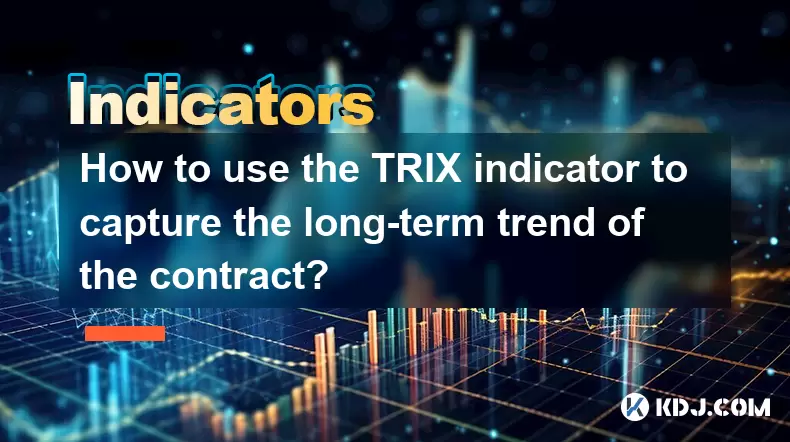
What Is the TRIX Indicator?
The TRIX (Triple Exponential Average) indicator is a momentum oscillator used to identify oversold and overbought conditions, as well as potential trend reversals in financial markets. It is calculated by applying a triple exponential moving average to price data and then taking the percentage rate of change of that smoothed value. The TRIX indicator helps filter out market noise and provides clearer signals for long-term trends.
In the context of cryptocurrency contracts, where volatility can be extreme, using the TRIX indicator allows traders to isolate significant movements from short-term fluctuations. Its smoothing effect makes it particularly useful for identifying long-term trend directions without being misled by false signals or sudden price swings.
How Does the TRIX Indicator Work in Cryptocurrency Contracts?
To understand how the TRIX indicator functions within the crypto derivatives space, it’s important to break down its mechanics. The indicator is typically applied to a closing price series, with the following steps:
- Apply an EMA (Exponential Moving Average) to the closing prices.
- Apply another EMA to the result from the first calculation.
- Apply a third EMA to the second result.
- Calculate the percentage change between the current and previous values of this triple-smoothed line.
This process results in a single line that oscillates around a zero axis. When the TRIX line crosses above zero, it may signal the start of a bullish trend, while a cross below zero could indicate a bearish trend. In contract trading, these signals are crucial for managing positions and setting stop-loss or take-profit levels effectively.
Setting Up the TRIX Indicator on Trading Platforms
Before utilizing the TRIX indicator in your strategy, you must ensure it is properly configured on your trading platform. Most major platforms like Binance Futures, Bybit, or TradingView offer built-in support for TRIX. Here's how to set it up:
- Open your preferred charting tool and navigate to the indicators section.
- Search for “TRIX” and select it.
- Choose the period length (typically 14 or 20 for general use).
- Optionally, add a signal line, which is usually a moving average of the TRIX line itself, to generate more reliable trade signals.
After adding the TRIX indicator, observe how it behaves in relation to historical price action. This step is essential for gaining familiarity with how the indicator reacts to different market conditions before implementing it in live trading scenarios.
Interpreting TRIX Signals in Long-Term Contract Positions
When managing long-term positions in cryptocurrency futures, interpreting TRIX signals correctly can make the difference between riding a strong trend and exiting prematurely. Here are key interpretations:
- TRIX crosses above zero: Indicates rising momentum and potential continuation of a bullish trend.
- TRIX crosses below zero: Suggests weakening momentum and possible bearish continuation.
- Divergence between TRIX and price: Can signal trend exhaustion. For example, if the price makes new highs but TRIX fails to confirm, it may indicate a reversal.
For long-term contract holders, monitoring divergence is especially valuable. A divergence might not provide immediate actionable signals but serves as a warning sign that the prevailing trend may be losing strength. Combining this with volume analysis or other tools like the MACD can enhance accuracy.
Practical Application: Using TRIX to Confirm Trend Entries and Exits
Integrating the TRIX indicator into your entry and exit strategies involves more than just watching for crossovers. Consider the following practical approach:
- Use the TRIX line crossing its signal line as confirmation for entries. A bullish crossover occurs when the TRIX line rises above the signal line; a bearish crossover happens when it falls below.
- Combine with support/resistance levels. If the TRIX confirms a breakout above a resistance level, it adds weight to the validity of the move.
- Monitor for zero-line retests after a sustained trend. These can serve as low-risk entry points for those looking to join a continuing trend.
In contract trading, where leverage amplifies both gains and losses, confirming entries and exits with TRIX can help avoid premature trades and improve overall performance. Traders should also consider adjusting their position size based on the strength of the TRIX signal and current market volatility.
Frequently Asked Questions (FAQ)
What time frame is best suited for using the TRIX indicator in contract trading?
While the TRIX indicator can be applied across various time frames, daily or 4-hour charts are generally most effective for capturing long-term trends in cryptocurrency contracts. These time frames reduce the impact of short-term volatility and allow the TRIX to provide clearer trend signals.
Can the TRIX indicator be used alone for making trading decisions?
Although the TRIX indicator is powerful, relying solely on it may lead to missed opportunities or false signals. It's recommended to combine it with complementary tools such as volume indicators, moving averages, or support and resistance levels for robust decision-making.
How do I adjust the TRIX settings for different cryptocurrencies?
Cryptocurrencies vary in volatility and liquidity, so the optimal TRIX settings may differ. Start with the default 14-period setting and adjust based on backtesting. More volatile assets like SOL or DOGE may benefit from longer periods (e.g., 20), while stablecoins or less volatile pairs might work better with shorter periods.
Is the TRIX indicator suitable for scalping or intraday trading?
The TRIX indicator is primarily designed for filtering noise and identifying medium to long-term trends. While it can be adapted for intraday use, its lagging nature due to multiple smoothing layers makes it less ideal for fast-paced scalping strategies. Traders focusing on short-term trades often prefer faster-moving oscillators like RSI or Stochastic for quicker responses.
Disclaimer:info@kdj.com
The information provided is not trading advice. kdj.com does not assume any responsibility for any investments made based on the information provided in this article. Cryptocurrencies are highly volatile and it is highly recommended that you invest with caution after thorough research!
If you believe that the content used on this website infringes your copyright, please contact us immediately (info@kdj.com) and we will delete it promptly.
- Filecoin, Secure Storage, and Avalanche Enterprises: A New Era of Blockchain Collaboration
- 2025-06-20 14:45:13
- SEI Price Surge: Decoding the Reasons Behind the Rise
- 2025-06-20 14:25:12
- Cryptos for the Long Haul: Early Investors' Edge in 2025
- 2025-06-20 14:25:12
- Bitcoin Price in June 2025: Riding the $100K Wave?
- 2025-06-20 14:45:13
- Tether, Stablecoins, and Public Offerings: A New York Perspective
- 2025-06-20 15:05:13
- XRP Price Consolidates as Solana Meme Coin Snorter Token Gains Traction
- 2025-06-20 15:25:12
Related knowledge

Is it a real drop when KDJ crosses but the trading volume shrinks?
Jun 20,2025 at 03:49pm
Understanding KDJ and Its Role in Cryptocurrency TradingIn the realm of cryptocurrency trading, technical analysis plays a crucial role in identifying potential price movements. The KDJ indicator, also known as the stochastic oscillator with a J line added for momentum confirmation, is widely used by traders to gauge overbought or oversold conditions. I...
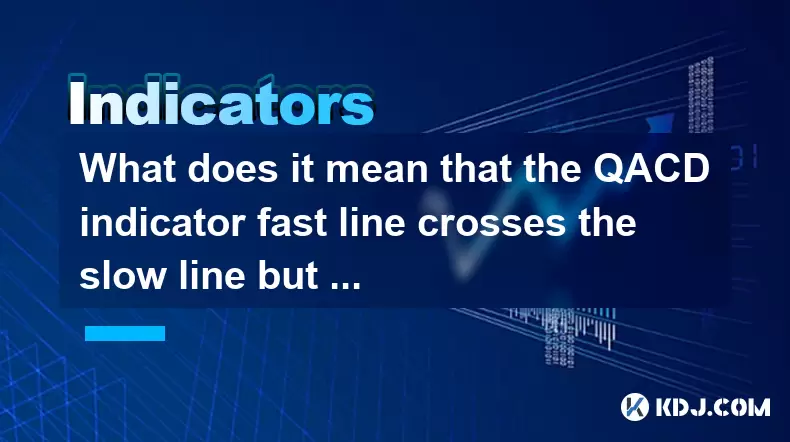
What does it mean that the QACD indicator fast line crosses the slow line but does not increase in volume?
Jun 20,2025 at 12:22pm
Understanding the QACD Indicator and Its ComponentsThe QACD (Quantitative Accumulation Convergence Divergence) indicator is a technical analysis tool used by traders to identify potential trend reversals, momentum shifts, and entry or exit points in cryptocurrency markets. It consists of two primary lines: the fast line, which reacts more quickly to pri...
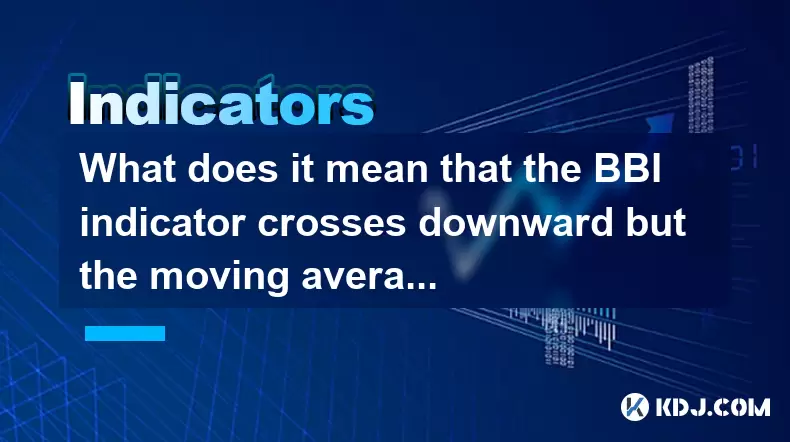
What does it mean that the BBI indicator crosses downward but the moving average does not cross?
Jun 20,2025 at 03:07pm
Understanding the Role of Blockchain in Cryptocurrency TransactionsBlockchain technology is the foundational infrastructure behind most cryptocurrencies. It serves as a decentralized, distributed ledger that records all transactions across a network of computers. This ensures transparency and eliminates the need for a central authority like a bank. Each...
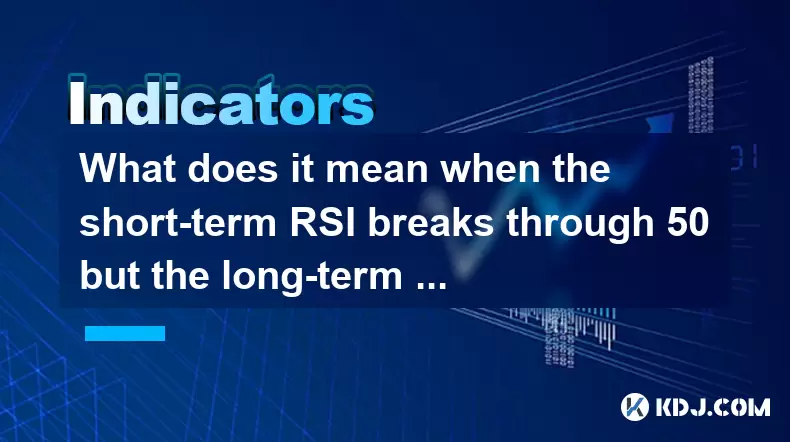
What does it mean when the short-term RSI breaks through 50 but the long-term RSI does not move in the RSI indicator?
Jun 20,2025 at 10:42am
Understanding the RSI Indicator and Its Dual-Term ApplicationThe Relative Strength Index (RSI) is a widely used momentum oscillator in technical analysis, primarily for identifying overbought or oversold conditions in an asset’s price movement. It typically operates on a scale from 0 to 100, with levels above 70 considered overbought and below 30 consid...
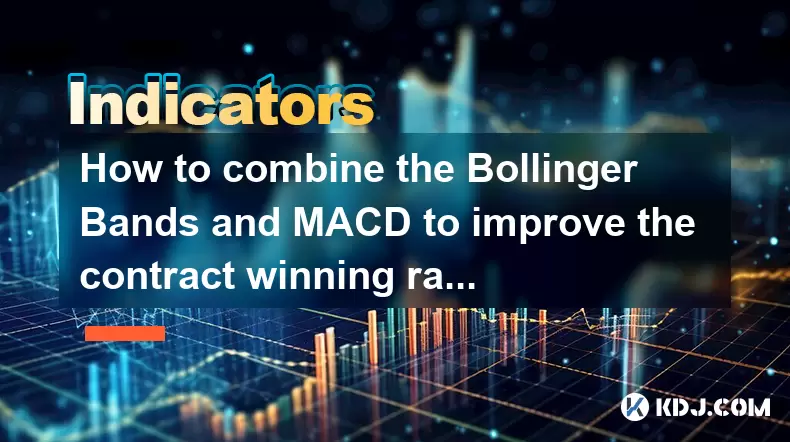
How to combine the Bollinger Bands and MACD to improve the contract winning rate?
Jun 19,2025 at 06:35pm
Understanding Bollinger Bands and MACD IndicatorsTo effectively combine Bollinger Bands and the MACD (Moving Average Convergence Divergence), it's essential to first understand what each indicator represents. Bollinger Bands consist of a middle moving average line and two outer bands that adjust based on market volatility. When prices move toward the up...

How to use the TRIX indicator to capture the long-term trend of the contract?
Jun 20,2025 at 09:14am
What Is the TRIX Indicator?The TRIX (Triple Exponential Average) indicator is a momentum oscillator used to identify oversold and overbought conditions, as well as potential trend reversals in financial markets. It is calculated by applying a triple exponential moving average to price data and then taking the percentage rate of change of that smoothed v...

Is it a real drop when KDJ crosses but the trading volume shrinks?
Jun 20,2025 at 03:49pm
Understanding KDJ and Its Role in Cryptocurrency TradingIn the realm of cryptocurrency trading, technical analysis plays a crucial role in identifying potential price movements. The KDJ indicator, also known as the stochastic oscillator with a J line added for momentum confirmation, is widely used by traders to gauge overbought or oversold conditions. I...

What does it mean that the QACD indicator fast line crosses the slow line but does not increase in volume?
Jun 20,2025 at 12:22pm
Understanding the QACD Indicator and Its ComponentsThe QACD (Quantitative Accumulation Convergence Divergence) indicator is a technical analysis tool used by traders to identify potential trend reversals, momentum shifts, and entry or exit points in cryptocurrency markets. It consists of two primary lines: the fast line, which reacts more quickly to pri...

What does it mean that the BBI indicator crosses downward but the moving average does not cross?
Jun 20,2025 at 03:07pm
Understanding the Role of Blockchain in Cryptocurrency TransactionsBlockchain technology is the foundational infrastructure behind most cryptocurrencies. It serves as a decentralized, distributed ledger that records all transactions across a network of computers. This ensures transparency and eliminates the need for a central authority like a bank. Each...

What does it mean when the short-term RSI breaks through 50 but the long-term RSI does not move in the RSI indicator?
Jun 20,2025 at 10:42am
Understanding the RSI Indicator and Its Dual-Term ApplicationThe Relative Strength Index (RSI) is a widely used momentum oscillator in technical analysis, primarily for identifying overbought or oversold conditions in an asset’s price movement. It typically operates on a scale from 0 to 100, with levels above 70 considered overbought and below 30 consid...

How to combine the Bollinger Bands and MACD to improve the contract winning rate?
Jun 19,2025 at 06:35pm
Understanding Bollinger Bands and MACD IndicatorsTo effectively combine Bollinger Bands and the MACD (Moving Average Convergence Divergence), it's essential to first understand what each indicator represents. Bollinger Bands consist of a middle moving average line and two outer bands that adjust based on market volatility. When prices move toward the up...

How to use the TRIX indicator to capture the long-term trend of the contract?
Jun 20,2025 at 09:14am
What Is the TRIX Indicator?The TRIX (Triple Exponential Average) indicator is a momentum oscillator used to identify oversold and overbought conditions, as well as potential trend reversals in financial markets. It is calculated by applying a triple exponential moving average to price data and then taking the percentage rate of change of that smoothed v...
See all articles

























































































